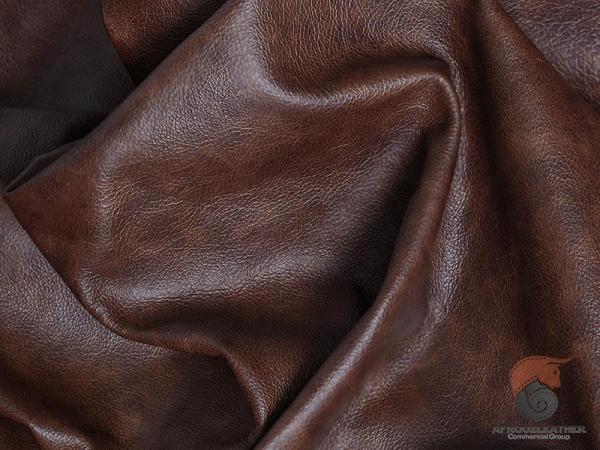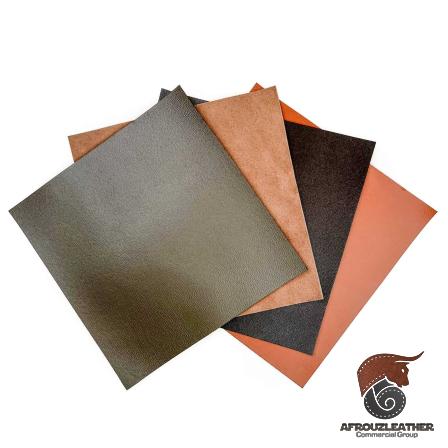Raw genuine leather is a timeless material that has been used throughout history for its exceptional durability, flexibility, and aesthetic appeal. From clothing and accessories to furniture and automotive upholstery, genuine leather is widely sought after for its unique qualities. In this article, we delve into the world of raw genuine leather, exploring its production process, types, qualities, and various applications. 1. Understanding Raw Genuine Leather: Raw genuine leather, also known as full-grain leather, is the highest quality and most desirable form of leather. It is derived from the hide of animals (usually cattle, sheep, or goat), which undergoes various treatments to preserve its natural characteristics. Unlike other leather types, raw genuine leather retains its original grain, ensuring strength, durability, and a distinct appearance. 2. Production Process: The production of raw genuine leather involves several key stages: a. Preparing the Hide: The animal hide is carefully selected and prepared to remove any impurities or undesirable elements.
leather
 Hair, flesh, and fat are cleaned off to achieve a clean surface for further processing. b. Tanning: The tanning process aims to convert raw hide into a stable material by preserving its natural qualities. There are two main methods of tanning: vegetable tanning, which uses organic materials, and chrome tanning, which uses chromium salts to achieve a uniform finish. c. Cutting and Dyeing: After tanning, the leather is cut into various sizes and shapes based on its intended use. Dyeing is then carried out to provide the desired color and appearance. Natural dyes or synthetic pigments can be used depending on the desired outcome. d. Finishing: The final stage involves adding finishing touches to the leather. This may include buffing, polishing, embossing, or adding protective coatings to enhance durability, texture, and appearance. 3. Types of Raw Genuine Leather: Various types of raw genuine leather exist, each offering unique characteristics and suitability for specific applications. Here are some commonly recognized types: a. Aniline Leather: This type of leather is dyed using transparent dyes, allowing the natural grain and markings to show through.
Hair, flesh, and fat are cleaned off to achieve a clean surface for further processing. b. Tanning: The tanning process aims to convert raw hide into a stable material by preserving its natural qualities. There are two main methods of tanning: vegetable tanning, which uses organic materials, and chrome tanning, which uses chromium salts to achieve a uniform finish. c. Cutting and Dyeing: After tanning, the leather is cut into various sizes and shapes based on its intended use. Dyeing is then carried out to provide the desired color and appearance. Natural dyes or synthetic pigments can be used depending on the desired outcome. d. Finishing: The final stage involves adding finishing touches to the leather. This may include buffing, polishing, embossing, or adding protective coatings to enhance durability, texture, and appearance. 3. Types of Raw Genuine Leather: Various types of raw genuine leather exist, each offering unique characteristics and suitability for specific applications. Here are some commonly recognized types: a. Aniline Leather: This type of leather is dyed using transparent dyes, allowing the natural grain and markings to show through.
Specifications of leather
 Aniline leather is known for its softness, rich color, and natural appearance. b. Semi-Aniline Leather: Similar to aniline leather, but with a small amount of pigmented finish, semi-aniline leather offers extra protection and enhanced durability without compromising its natural beauty. c. Nubuck Leather: Nubuck leather is produced from the outer side of the hide, resulting in a suede-like surface. It is renowned for its velvety texture and luxurious feel. d. Pull-Up Leather: This type of leather features a distinctive aged appearance. Pull-up leather develops a unique patina over time due to the oils and waxes used during the finishing process. It is highly sought after for its vintage aesthetic. 4. Qualities of Raw Genuine Leather: Raw genuine leather possesses several remarkable qualities that make it a preferred material in various industries: a. Durability: Genuine leather is known for its exceptional strength and resilience, making it a durable material that can withstand daily wear and tear. b. Natural Beauty: Retaining the natural grain and character of the hide, raw genuine leather exudes a timeless beauty that enhances its appeal. c. Breathability: Unlike synthetic materials, genuine leather allows air to circulate, making it comfortable to wear in different climates. d. Flexibility: Raw genuine leather molds and adapts to the shape of the individual, providing exceptional comfort and flexibility.
Aniline leather is known for its softness, rich color, and natural appearance. b. Semi-Aniline Leather: Similar to aniline leather, but with a small amount of pigmented finish, semi-aniline leather offers extra protection and enhanced durability without compromising its natural beauty. c. Nubuck Leather: Nubuck leather is produced from the outer side of the hide, resulting in a suede-like surface. It is renowned for its velvety texture and luxurious feel. d. Pull-Up Leather: This type of leather features a distinctive aged appearance. Pull-up leather develops a unique patina over time due to the oils and waxes used during the finishing process. It is highly sought after for its vintage aesthetic. 4. Qualities of Raw Genuine Leather: Raw genuine leather possesses several remarkable qualities that make it a preferred material in various industries: a. Durability: Genuine leather is known for its exceptional strength and resilience, making it a durable material that can withstand daily wear and tear. b. Natural Beauty: Retaining the natural grain and character of the hide, raw genuine leather exudes a timeless beauty that enhances its appeal. c. Breathability: Unlike synthetic materials, genuine leather allows air to circulate, making it comfortable to wear in different climates. d. Flexibility: Raw genuine leather molds and adapts to the shape of the individual, providing exceptional comfort and flexibility.
buy leather
 e. Longevity: With proper care and maintenance, raw genuine leather products can last for decades, making them a sustainable choice. 5. Applications of Raw Genuine Leather: Raw genuine leather finds a wide range of applications across various industries: a. Fashion: Leather jackets, bags, belts, and footwear are popular fashion items that utilize raw genuine leather for its unparalleled style and durability. b. Furniture: Leather furniture, such as sofas, chairs, and ottomans, not only offers luxurious comfort but also adds a touch of sophistication to any interior setting. c. Automotive: Leather upholstery is a common feature in high-end automobiles, providing an elegant and comfortable driving experience. d. Accessories: Raw genuine leather is often used to create wallets, watch straps, phone cases, and other small accessories due to its durability and luxurious appeal. e. Industrial Goods: Leather is also employed in the production of gloves, boots, saddles, and bags for military, construction, and outdoor activities due to its toughness and resistance to abrasion. Conclusion: Raw genuine leather continues to be a highly sought-after material due to its durability, versatility, and natural beauty. From fashion to furniture, its timeless appeal makes it a preferred choice for those seeking high-quality, long-lasting products. Understanding the production process, different types, and qualities of raw genuine leather enables consumers to make informed decisions and appreciate the craftsmanship involved in creating these exceptional goods.
e. Longevity: With proper care and maintenance, raw genuine leather products can last for decades, making them a sustainable choice. 5. Applications of Raw Genuine Leather: Raw genuine leather finds a wide range of applications across various industries: a. Fashion: Leather jackets, bags, belts, and footwear are popular fashion items that utilize raw genuine leather for its unparalleled style and durability. b. Furniture: Leather furniture, such as sofas, chairs, and ottomans, not only offers luxurious comfort but also adds a touch of sophistication to any interior setting. c. Automotive: Leather upholstery is a common feature in high-end automobiles, providing an elegant and comfortable driving experience. d. Accessories: Raw genuine leather is often used to create wallets, watch straps, phone cases, and other small accessories due to its durability and luxurious appeal. e. Industrial Goods: Leather is also employed in the production of gloves, boots, saddles, and bags for military, construction, and outdoor activities due to its toughness and resistance to abrasion. Conclusion: Raw genuine leather continues to be a highly sought-after material due to its durability, versatility, and natural beauty. From fashion to furniture, its timeless appeal makes it a preferred choice for those seeking high-quality, long-lasting products. Understanding the production process, different types, and qualities of raw genuine leather enables consumers to make informed decisions and appreciate the craftsmanship involved in creating these exceptional goods.

Your comment submitted.